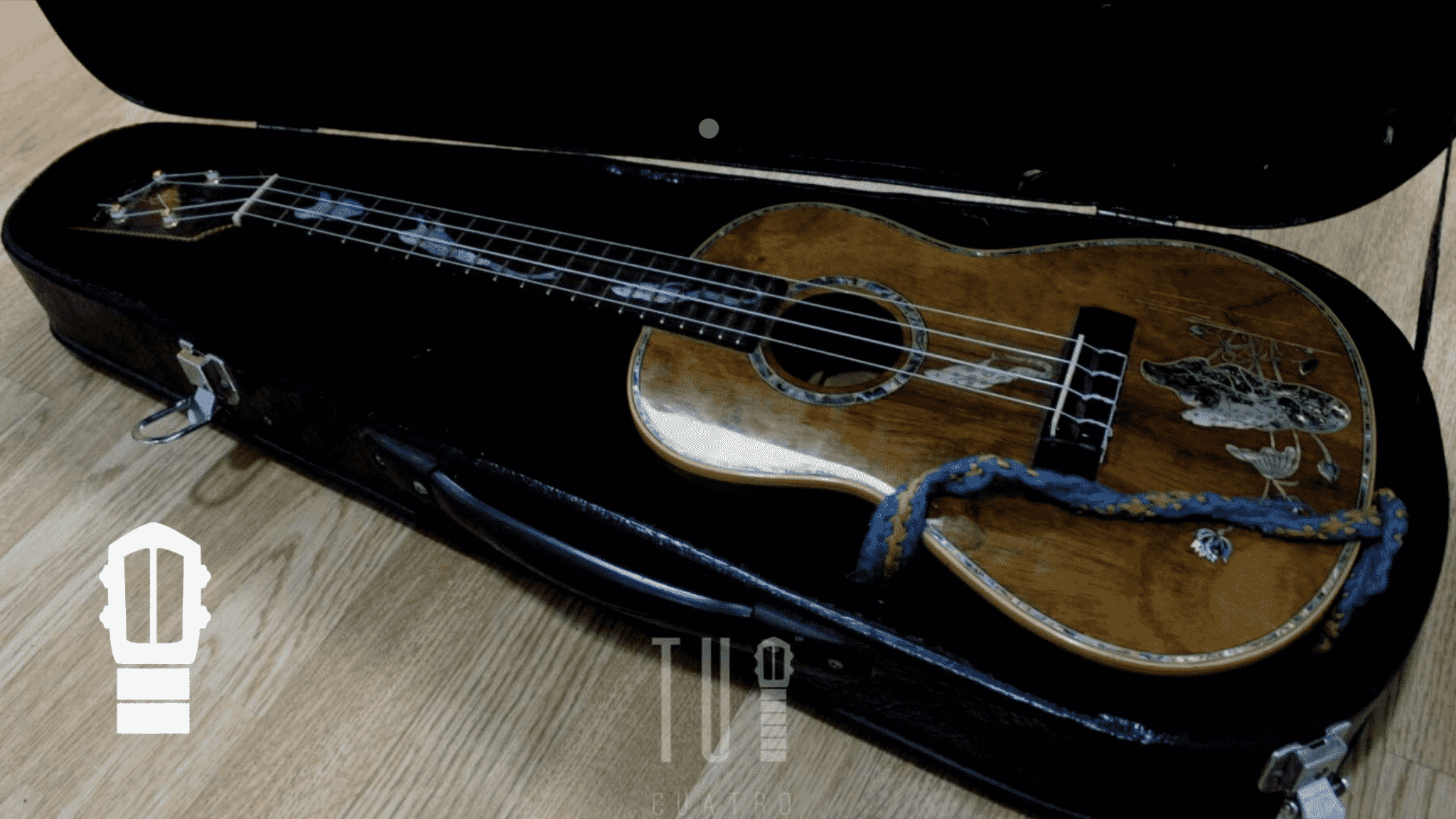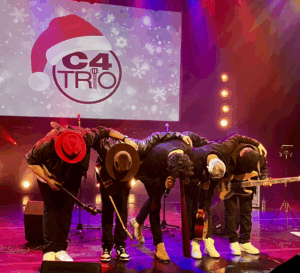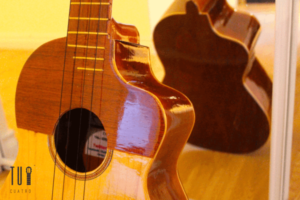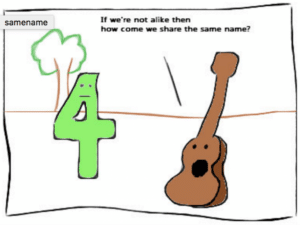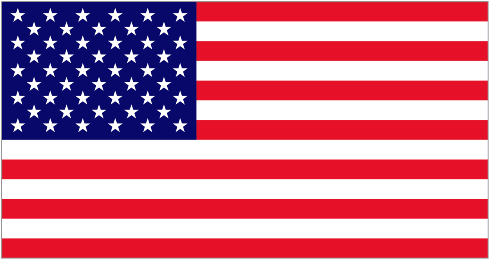No matter the musical instrument, there is a natural learning curve. Mastering the Ukulele is no different; It will take time to master the chords, strumming patterns, and essential fingerpicking techniques. But how long will this process take? And how can you make the most of your practice time to have fun and make progress quickly? In this post, we will explore these questions and provide tips and resources for learning the Ukulele most efficiently and enjoyably as possible. From the different sizes of Ukulele available to tuning, chord progressions, strumming patterns, fingerpicking, and resources for finding local ukulele groups or online communities to connect with other players, we will cover all the essential information to help you get started on your Ukulele journey. So, let’s start!
How to Learn Ukulele: A Beginner’s Guide
Learning to play the ukulele can be a fun and rewarding experience, even for those with little to no musical background. The ukulele’s simple structure, small size, and cheerful sound make it a perfect instrument for beginners. If you’re eager to learn ukulele, here’s a step-by-step guide to get you started. This is the recipe you’ll need to follow to become an Ukulele champion! LEt’s start.
1. Choose the Right Ukulele for You
Before you dive into learning, it’s important to pick the right type of ukulele. There are four common sizes: soprano, concert, tenor, and baritone. For beginners, the soprano or concert ukulele is often the best choice because of their smaller size and ease of handling. Ensure that your ukulele is well-tuned to get the best learning experience from day one.
2. Learn the Basics of Holding and Strumming
Once you have your ukulele, start by learning how to hold it properly. Make sure you’re comfortable while holding the instrument close to your body. The next step is mastering basic strumming patterns, which form the foundation of most ukulele songs. Use your index finger or thumb to strum across the strings gently, keeping your wrist relaxed.
3. Start with Easy Chords
A great way to start learning is by practicing a few basic chords. Some of the easiest ukulele chords for beginners include C, G, F, and Am. These chords are used in countless songs, so once you master them, you’ll be able to play many of your favorite tunes. Practice transitioning between these chords smoothly to build muscle memory.
4. Practice Popular Songs
One of the most motivating ways to learn is by playing songs you know and love. Start with simple tunes that use basic chords and strumming patterns. Songs like “Riptide” by Vance Joy or “Somewhere Over the Rainbow” by Israel Kamakawiwo’ole are excellent choices for beginners. These songs will help you build confidence while reinforcing your chord transitions and rhythm.
5. Learn to Read Ukulele Tabs
Ukulele tabs (tablature) are a simplified way of reading music specifically for the ukulele. Unlike traditional sheet music, tabs are easier to understand and focus solely on the strings and frets. Learning to read tabs will open up a world of songs for you to explore and practice.
6. Use Online Resources and Apps
Today, there are plenty of apps and websites designed to help beginners learn ukulele. Apps like Yousician, Fender Play, or Ultimate Guitar provide interactive lessons, song libraries, and chord charts, making the learning process more enjoyable and accessible. Incorporating these tools into your practice routine can accelerate your progress.
7. Join a Ukulele Community
Learning to play ukulele doesn’t have to be a solo journey. There are many online communities and local groups where you can meet fellow ukulele players. Sharing tips, learning new songs, and even participating in group performances can enhance your learning experience and keep you motivated.
What’s the best way to learn how to play Ukulele?
Different approaches can work well depending on your goals and learning style when it comes to learning how to play the Ukulele. From a musician’s perspective, it always makes sense to learn as much music theory first before even trying to strum any instrument. We, musicians, like to learn the intrinsics of every chord and rhythm, even if we don’t apply the knowledge to our instrument immediately.
However, we also recognize that not everyone who wants to learn the Ukulele has the same goals or learning style as us. Some people want to have fun and learn a few songs they like, while others may be more interested in singing a specific song. In these cases, starting with the most basic chords and easy strumming patterns can be a great way to get started and keep things enjoyable. For most of the students, it doesn’t make much sense to learn music theory right off the bat.
We recommend a balance between learning theory and practical application by starting with easy songs that use basic chords and learning more complex chords and songs as you become more comfortable. This approach will help you keep motivated and engaged as you learn new skills while you have fun playing the Ukulele.
Learn Ukulele Faster with These Expert Tips
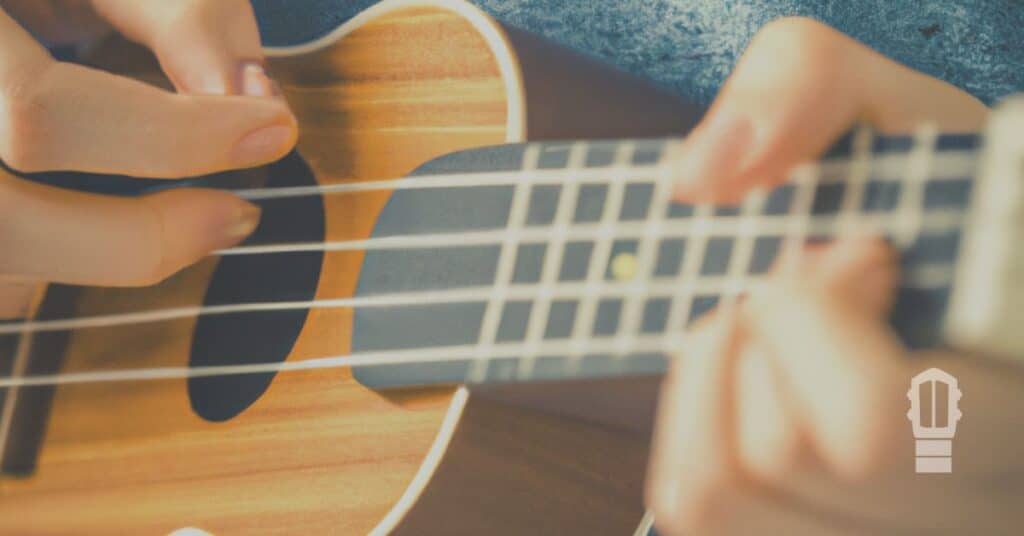
Setting clear goals is one of the best ways to improve when learning how to play the ukulele. Start by choosing a simple, measurable objective — for example, learning a new chord or mastering a short song. Break that goal into smaller, easier steps. You might begin by practicing the correct finger placement and strumming pattern until it feels natural. Once you’re confident, try adding that new chord into a full song or melody. This focused approach keeps your practice organized and helps you make steady progress
Another key part of learning how to play the ukulele is regular practice. Consistency helps you build muscle memory, refine your technique, and strengthen your overall playing skills. Try setting aside a specific time each day or week to practice, even if it’s just for a few minutes. Short, focused sessions are more effective than long, irregular ones. When you make practice a natural part of your routine, you’ll notice steady improvement and faster progress toward your goals
What resources are available?
Gladly, we live in an era where information is readily available for any at no cost or at a cost so insignificant that almost anybody can afford it. Thus, many different resources are available for you to help you learn a new instrument.
Here are a few of the ones we recommend. Listed, not in order of importance, but in the natural order someone new to the Ukulele world would find them as they go through the learning process:
Learn how to Tune the Ukulele
If you are starting, you’ll first have to learn how to tune the Ukulele. Use this free online ukulele tuner to check that all your strings are correctly tuned.
You can also use a tuning reference, typically A 440Hz (use this video as a reference), to tune your ukulele or watch some youtube videos, like this one, to learn how to tune by ear.
Watch some strumming videos on Youtube
The very first place you can start is Youtube. Many musicians explain basic techniques for strumming the Ukulele and playing the basic chords.
If you’re starting from zero, be sure to pick your battles. You don’t want to jump into videos showing you how to strum and play chords simultaneously, but pick the ones dedicated to strumming first and then a few that only teach chords.
One of the channels that we like the most is Cynthia Lin Music; she has the most wonderful videos for beginners and explains slow, nice, and clear, in a way so anybody can kickstart their way into the Ukulele world:
Some of the typical strumming patterns for the Ukulele include down-up, down-down-up, and up-down-up-down
down-up
down-down-up
up-down-up-down
Learn some basic chords for Ukulele
Once you have your Ukulele tuned, the next step is to learn some basic chords and strumming patterns. Start with the most common chords, such as C, F, G, and A minor. Websites like Ukulele-Tabs.com and Ukulele-Chords.com have many chords, tabs, and lyrics for popular songs.
C F G Am
After learning the basic strumming and maybe a few chords, the second resource we do recommend is websites dedicated to Songs:
Websites with Songs and Chords
Here are a few of the websites with songs for the Ukulele that we like the most:
Once you’ve tried to play a few songs, you’ll have a basic understanding of how chords are used in the songs you like the most and which chords, particularly, are challenging to perform. This will pave the way to our next category of websites:
Online Courses and Lessons
While you learn with Youtube videos and try to play a few songs, you’ll also note that your technique is not as good as it should be, and your strumming sounds rough and too strident or shrill; here’s where you might need expert help.
There are plenty of online tutorials and lessons available for free. Websites like Ukulele Underground and Ukulele Buddy offer a wide range of tutorials and lessons for beginners, including videos on how to play specific songs. These few sites are dedicated to teaching Ukulele techniques, so whenever you’re ready to polish your technique, check them for more information about how to create a polished technique for both strumming and chords. You’ll find a list below of the ones we recommend, some of them paid, some of them free:
These three categories of resources, YouTube (basics), Websites (songs and chords), and Learning Systems (techniques), are, in our opinion, the best formula to start learning the Uke.
How long does it take to learn Ukulele?
In our experience as professional musicians, there are three main types of students when it comes to learning the Ukulele, and the time it takes to master the instrument can vary depending on certain attributes of each group.
The Musician: This type of student is eager to learn and is dedicated to studying the subject in depth. They are willing to dedicate many hours a day to learning the instrument and have a strong understanding of music theory. With this approach, they can learn how to play the Ukulele in as little as 2 to 4 weeks.
The Aficionado: This type of student has enough time on their hands to dedicate to practicing a few songs. They are interested in learning more than just the basics and enjoy watching videos on how to string strings correctly. They tend to practice for about an hour a day or for as long as the task is pleasurable, but no more. With this approach, they can master the basics and play a few songs in about a month to three months.
The Singer: This type of student has one main goal in mind, which is to sing their favorite songs. They are focused on learning how to strum the specific song and how to position their fingers to play the chords. They may not spend as much time learning the chord names or more detailed music theory, but they can still play their favorite songs beautifully. They practice for about half an hour a day, and it may take about three months to master the basics and play a few songs.
In a nutshell
It’s important to note that these are rough estimates. The actual time it takes to master the Ukulele can vary depending on the individual’s learning style, practice schedule, and dedication. Regardless of the type of student, finding a method that aligns with your goals, learning style, and interests is essential to make the most of your practice time and enjoy learning to play this beautiful instrument. As professional musicians, we recommend trying different methods and resources until you find the best one.
There’s a clear pattern that, if you like math, you might infer in these three reference student types: It doesn’t matter at what pace you learn; you’ll have to dedicate between 50 to 100 hours to the learning. It doesn’t matter if you do a total of 100 hours in a week or if it takes you three months or more; the time to learn how to play ukulele is always about the same, 100 hours or around.
In short, learning Ukulele requires a lot of practice; you can spend as much as a few hours a day and get better in just a few weeks or take it with ease and practice just a bit every day but see results in a longer timeframe.
Frequently Asked Questions About Learning Ukulele
1. How long does it take to learn the ukulele?
Learning to play the ukulele can take anywhere from a few weeks to a few months, depending on how often you practice. If you dedicate 15–30 minutes a day to practicing chords, strumming, and transitioning between notes, you should be able to play simple songs within the first few weeks. To become more proficient and comfortable with various techniques, it may take a few months of consistent practice.
2. Is the ukulele easier to learn than guitar?
Yes, for most people, the ukulele is considered easier to learn than the guitar. The ukulele has four strings (compared to the guitar’s six), making chord shapes simpler and easier to remember. The smaller size also makes it more manageable, especially for beginners. If you’re looking for an instrument that’s beginner-friendly and fun to learn, the ukulele is a great choice.
3. What is the best ukulele for beginners?
The best ukulele for beginners is typically a soprano or concert ukulele. Soprano ukuleles are the smallest and have a bright, traditional sound, while concert ukuleles offer a slightly larger size with a fuller tone. Both are great for beginners because of their affordability, portability, and ease of use. Look for a reliable brand with positive reviews, such as Kala or Lanikai, to ensure quality.
4. Do I need to learn how to read sheet music?
No, you don’t need to learn how to read traditional sheet music to play the ukulele. Instead, many ukulele players rely on chord charts and tabs (tablature), which are much easier to understand. Tabs show you exactly where to place your fingers on the fretboard, making them a great tool for beginners.
5. Can I teach myself to play the ukulele?
Yes, you can teach yourself to play the ukulele with the right resources. There are many online tutorials, apps, and videos that provide step-by-step guidance for beginners. Platforms like YouTube offer free lessons, while apps like Yousician and Fender Play offer interactive learning experiences. Regular practice and dedication will help you progress quickly.
6. What are some easy songs to learn on the ukulele?
Some of the easiest songs to start with include “Riptide” by Vance Joy, “Somewhere Over the Rainbow” by Israel Kamakawiwo’ole, and “I’m Yours” by Jason Mraz. These songs use simple chords and repetitive strumming patterns, making them ideal for beginners who want to build confidence and improve their skills.
7. How often should I practice the ukulele?
Consistency is key when learning any instrument, including the ukulele. It’s recommended to practice for at least 15–30 minutes a day. This amount of practice helps you retain what you’ve learned while building muscle memory in your fingers. Over time, as you become more familiar with the instrument, you can gradually increase the length of your practice sessions.
8. What type of music can I play on the ukulele?
You can play a wide range of music on the ukulele, from traditional Hawaiian tunes to pop, rock, and folk songs. Thanks to its versatility and popularity, you’ll find ukulele arrangements for many modern songs. Whether you’re interested in strumming along to upbeat pop hits or playing soothing acoustic ballads, the ukulele can adapt to various genres.
9. Is it necessary to use a pick when playing the ukulele?
No, using a pick is not necessary when playing the ukulele. Most ukulele players use their fingers for strumming and plucking the strings. However, if you prefer a brighter and more defined sound, you can use a felt pick designed specifically for the ukulele. Some players also use thumb picks or fingerpicks, but this is purely a matter of personal preference.
This paints a picture that we hope is clear enough so you know what to do next and where to go to start learning the Ukulele. We sincerely hope you can kickstart your learning in the best way possible and, on top of all, have lots of fun while you learn.
